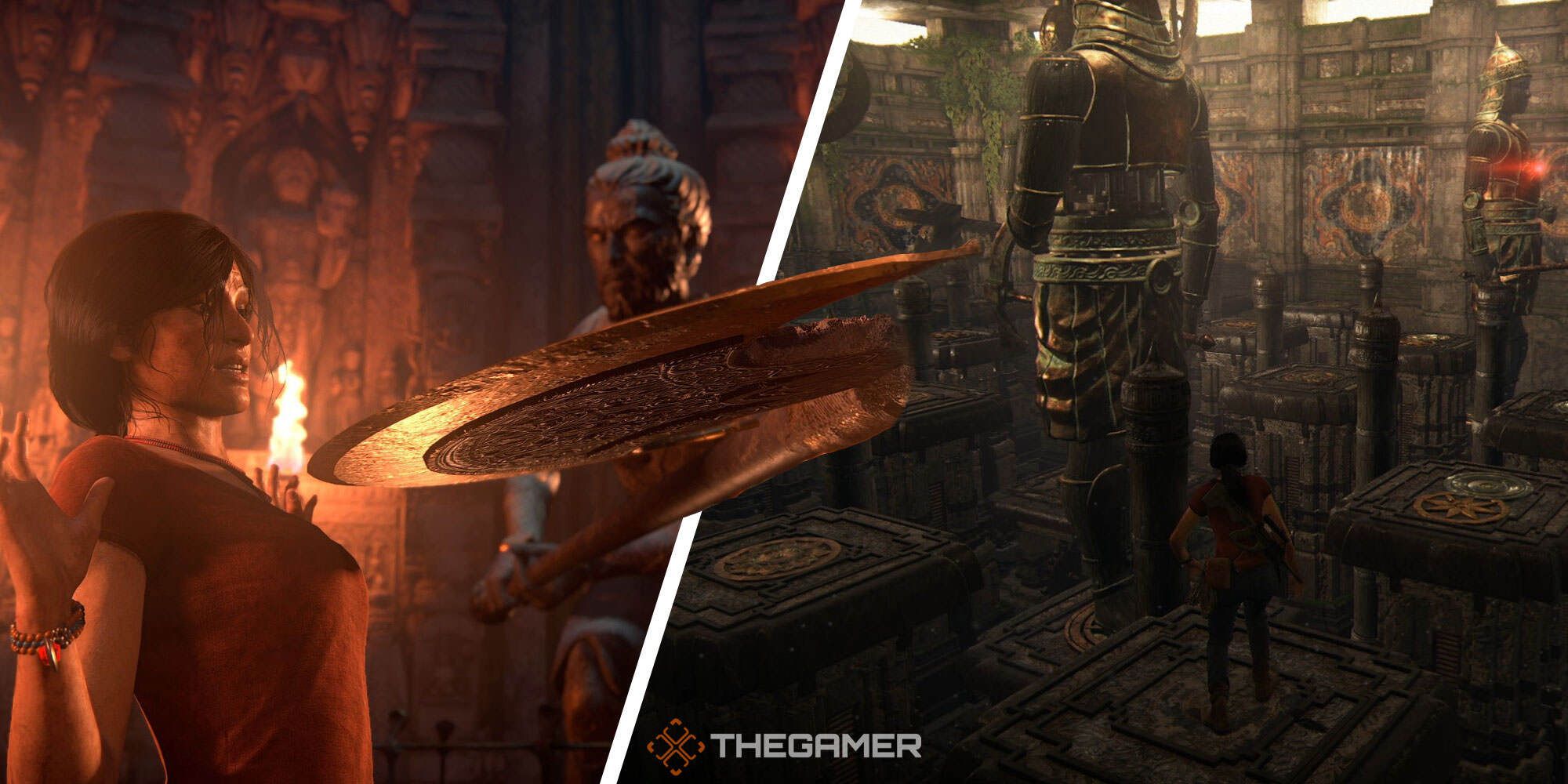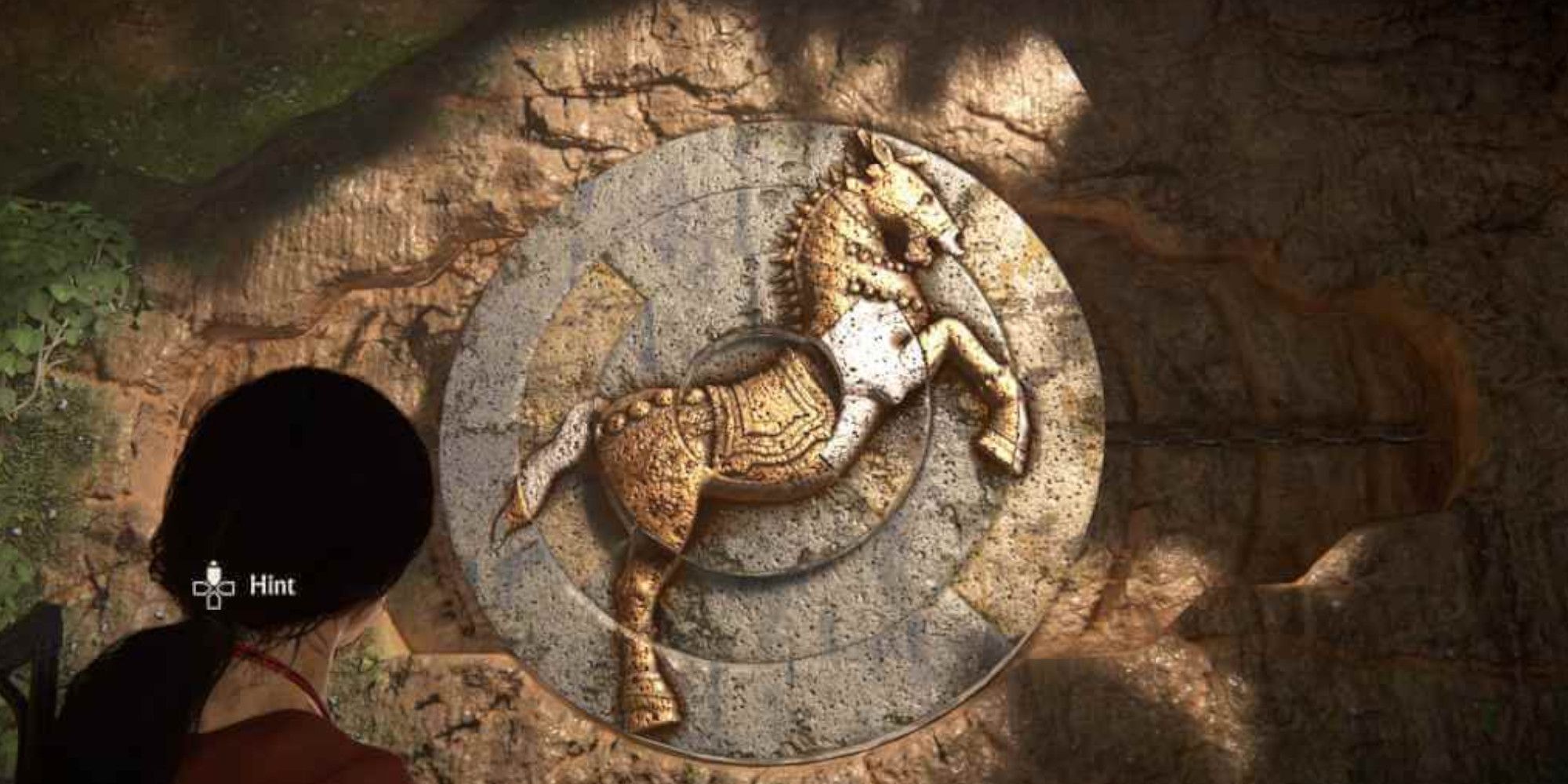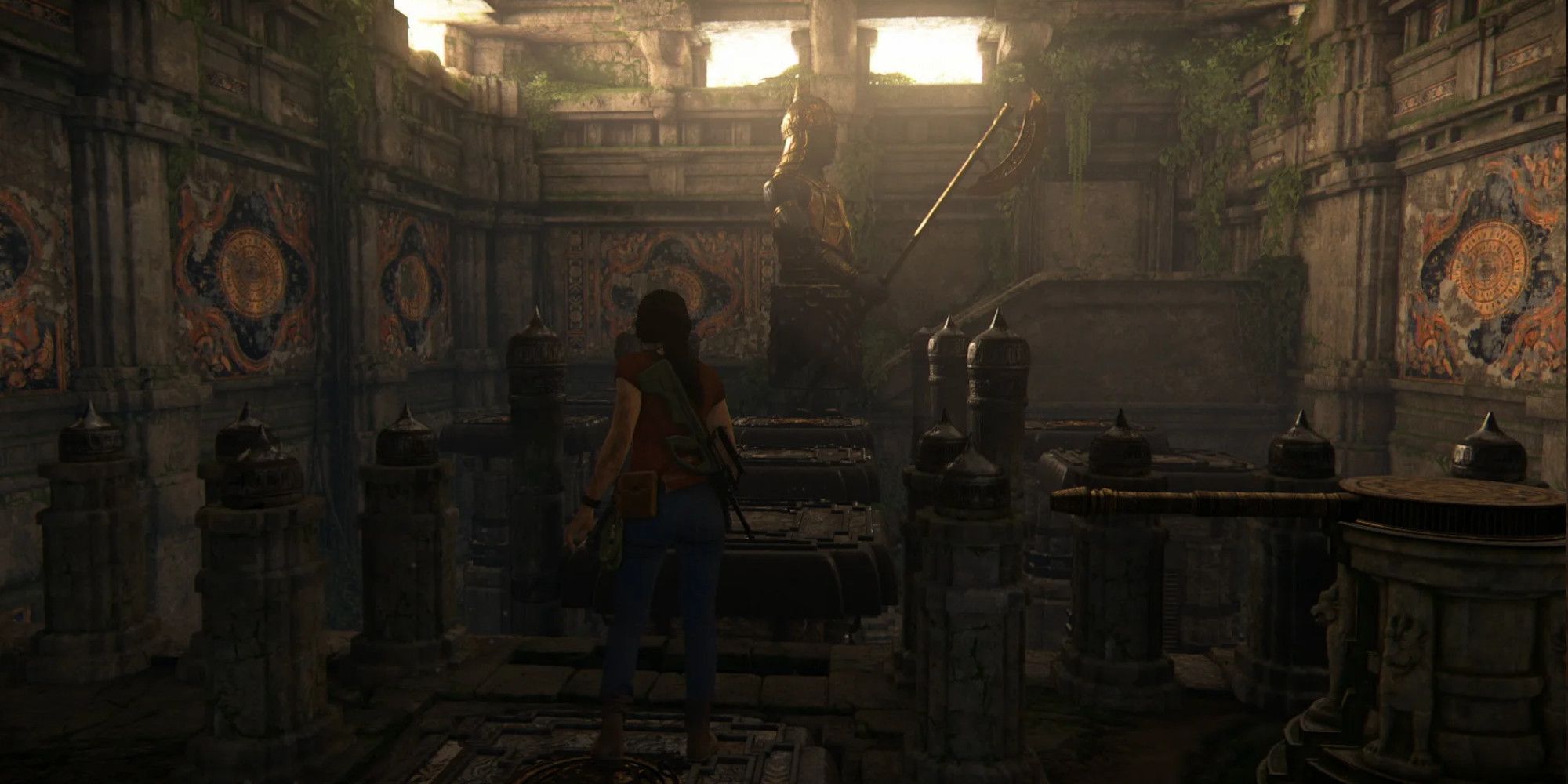It’s hard to believe an ancient civilization could keep its treasures hidden for hundreds, even thousands of years, with little more than a match-3 puzzle to keep the vaults locked. But that’s what the Uncharted games want me to believe. Most of the puzzles in the first four main series games amounted to little more than matching symbols or turning dials. Uncharted: The Lost Legacy, initially planned as a standalone expansion to Uncharted 4, is the first game in the series that’s actually challenged me with its puzzles.
The Uncharted games are action-adventure puzzle-platformers - that’s quite the mouthful - that sprinkle in a hefty number of spectacular set pieces throughout gameplay. It’s a formula that works really well. Explore, exposition, explosion, with puzzles and cover shooting mixed in. It’s simple and it works. The problem is the puzzles are far too easy - I never felt I’d earned the brilliant scenery or the jaw dropping action. If anything, the puzzles feel like minor time sinks that have been put in to make me feel like Indiana Jones or Lara Croft. Mostly, I just feel patronised.
The Lost Legacy’s puzzles are different. I’ll admit, I don’t have the best spatial awareness, which plays a big part of these challenges - I can’t tie knots and I’m awful at untangling cables or unspooling cling film. Still, I wasn’t expecting to be stopped in my tracks for ten minutes plus by some of the more complicated puzzles on offer here. The first that bamboozled me was one that involved having to complete a set of three rings. I could move one piece over to the opposite side at a time, but then the outer ring would block the inner ones. I had to fix the inner ring first, then the middle, then the outer one - it was like a Tower of Hanoi, but dead hard. For the life of me I just couldn’t do it. My housemate was watching - judging me - and figured out you have to move the outer piece to the other side, then grab the middle piece, then move the outer piece back, th- look, it was hard, so I just passed them the controller. It felt like a puzzle that could actually stop someone from breaking into an ancient city - it stopped me. I’m sure if I hadn’t been so angry at my own ineptitude I would have felt like I’d earned the stunning vistas that were sealed away behind the puzzle door.
The next puzzle I struggled with involved a giant statue bashing me with axes as I jumped about platforms in the air. The statue would swing for me every three jumps, but only in an area marked out by symbols on the platforms. Easy peasy, right? The next puzzle had more statues, and the one after that had even more, all with varying areas of effect and different ranges and attack times. There’s a trophy to be earned for explorers who can beat the challenges without getting hit. Needless to say, I have not earned that trophy. The final set of statues beat me black and blue for so long I had to stop for a dinner break. With a full belly and a clear head I figured it out, and felt like a real adventurer for the first time.
I felt like I’d accomplished something of more substance than just shooting hordes of nameless mercenaries. That’s rewarding too, because the combat in Uncharted can get surprisingly difficult, but if the characters I’m playing are all wise-cracking thieves with more history knowledge than a classics professor, I want to feel like I’m a part of that intellect.
Lost Legacy features a number of puzzles that consist of layered dials to rotate. The aim is to rotate the layers and form a complete picture or carving. The first couple are easy, but the further into the game I ventured the more convoluted the movements became. An inner layer would shift an outer layer, the outer layer would move the whole thing. Rather than the earlier entries that kept these puzzles simple, the ones in Lost Legacy get steadily more challenging. I think this may have been done to add some extra playtime, but it never feels unnecessary or bloated. It makes sense that the obstacles to the treasure would get tougher the closer I got. Instead of just facing tougher enemies, the lost civilization I was ransacking was also putting me through increasingly harder trials. Rather than the game being harder for the sake of it, the increased challenge had a narrative purpose.
The final challenge of note was one where I had to create two sets of shadows using one set of moving statues. Instead of being able to move each statue freely, they were all lined up in a three by three grid where I had to slide an entire row or column at a time. This meant I had to move statues out of position to block others, while also trying to make the whole thing work from two different perspectives. Now that’s how you hide an ancient treasure. None of this matching the symbols on the floor to the symbols on the wall nonsense. This all leads to the final big action fest, and I can’t wait. I’ve done the brain work, now I want to see big explosions and do cool shit - I finally feel like I’ve earned it.



